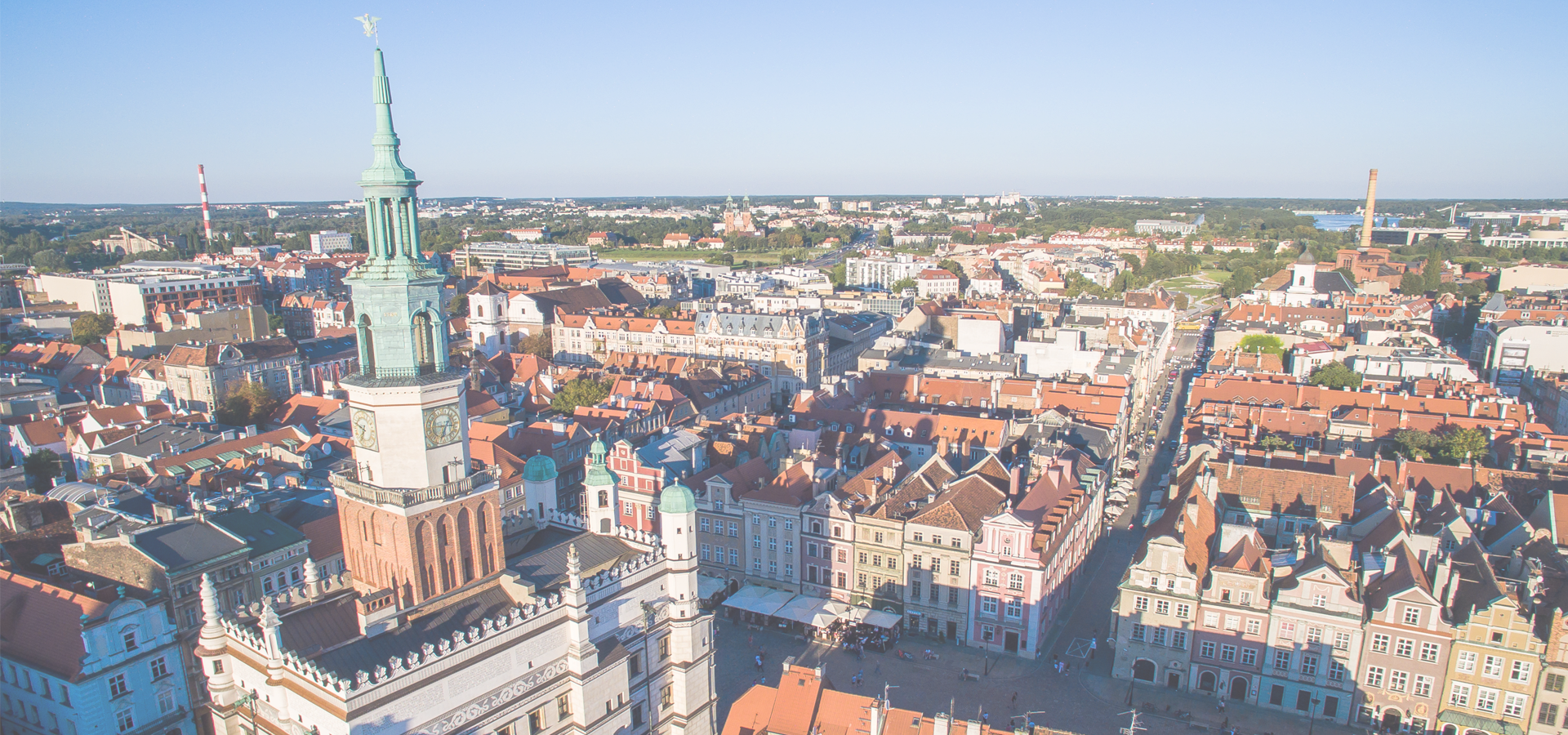Gostyń, Greater Poland Voivodeship, Poland
🇵🇱 Gostyń is a town in western Poland, seat of the Gostyń County and Gmina Gostyń in the Greater Poland Voivodeship. The total area of Gostyń is 10.79 square km (4.17 sq mi). The town comprises 1% of the area of the county and 8% of the commune, according to Główny Urząd Statystyczny.
The main landmark of Gostyń is Basilica of Święta Góra (Holy Hill), the main Marian sanctuary of the archdiocese of Poznań and a masterpiece of Pompeo Ferrari, with the monastery of the Oratory of Saint Philip Neri.
History Gostyń dates back to the 13th century. The town was founded by local nobleman Mikołaj Przedpełkowic and granted town rights in 1278 by Przemysł II. It was named after the nearby village of Gostyń, which since took the name of Stary Gostyń ("Old Gostyń"). Gostyń was a private town, administratively located in the Kościan County in the Poznań Voivodeship in the Greater Poland Province of the Polish Crown. It developed as a local centre of trade and crafts. In the 16th century Gostyń was an important regional Reformation centre, and in 1565 a synod of various Protestants of Greater Poland was held there. The town suffered during the 17th-century Swedish invasions and an epidemic in the 18th century. In the 18th century one of two main routes connecting Warsaw and Dresden ran through the town and Kings Augustus II the Strong and Augustus III of Poland often traveled that route.
In 1793 Gostyń was annexed by Prussia during the Second Partition of Poland. In 1807 regained by the Poles as part of the short-lived Duchy of Warsaw, in 1815 it was re-annexed by Prussia. Gostyń was a centre of Polish resistance to Germanisation policies. In 1835 Kasyno Gostyńskie was founded, a significant local Polish organization, which under the disguise of social activity conducted economic, educational and library activities. The Prussians abolished the organization in 1846 and its library's collection was moved to Poznań. Gostyń was the site of preparations for the Greater Poland uprising (1848), and during the uprising, it was captured by the Prussians in April 1848. Many inhabitants took part in the next Greater Poland uprising (1918–19), after which Gostyń joined the re-established Polish state.
History: World War II During the German invasion of Poland, which started World War II, Gostyń was captured by the Wehrmacht on 6 September 1939. During the Nazi German occupation of Poland, Gostyń became the site of public executions, arrests and expulsions of Poles. First mass arrests and executions were carried out in September 1939. On 21 October 1939 some 30 citizens of the town whose names were listed in the Sonderfahndungsbuch Polen (Special Prosecution Book-Poland) prepared by local German minority, were executed by an Einsatzkommando. Among the murdered were Gostyń's mayor Hipolit Niestrawski, Polish activists, officials, craftsmen and former Greater Poland insurgents. It was one of many massacres of Poles committed by Germany on 20–23 October 1939 across the region in attempt to pacify and terrorize the Polish population. Mass expulsions began on 4 December 1939, with up to 2,000 Poles deported to General Government on the orders of SS-Standartenführer Ernst Damzog stationing in Poznań. Between spring of 1940 and 15 March 1941 additional 3,222 were deported. Władysław Nawrocki, Polish officer and pre-war chairman of the local football club Kania Gostyń, was murdered by the Soviets in the Katyn massacre in 1940.
Despite such circumstances, local Poles organized an underground resistance movement, which included structures of the Polish Underground State, the secret youth organization Tajny Hufiec, and the Czarny Legion organization, which was founded in 1940. Czarny Legion was crushed by the Germans in 1941. Several dozens of its members were arrested and then brutally tortured in a prison in Rawicz. After a Nazi show trial in Zwickau in 1942, 12 members were executed in Dresden, and several dozen were imprisoned in Nazi concentration camps, where 37 of them died. German occupation ended in 1945.
Culture There is a local historical museum in Gostyń (Muzeum w Gostyniu) and a private car museum (Auto-Muzeum w Gostyniu).
Sport The local football club is Kania Gostyń . It competes in the lower leagues.
Villages Apart from the town of Gostyń, Gmina Gostyń contains the villages and settlements of Aleksandrowo, Bogusławki, Bronisławki, Brzezie, Brzezie-Huby, Czachorowo, Czajkowo, Dalabuszki, Daleszyn, Dusina, Gaj, Gola, Klony, Kosowo, Krajewice, Kunowo, Malewo, Markowo, Miranowo, Osowo, Ostrowo, Otówko, Pijanowskie Huby, Płaczkowo, Poraj, Siemowo, Sikorzyn, Skowronki, Stankowo, Stary Gostyń, Stężyca, Szczodrochowo, Tworzymirki, Witoldowo and Ziółkowo.
Neighbouring gminas Gmina Gostyń is bordered by the gminas of Dolsk, Krobia, Krzemieniewo, Krzywiń, Piaski and Poniec.
Neighbouring counties Gostyń County is bordered by Śrem County to the north, Jarocin County to the east, Krotoszyn County to the south-east, Rawicz County to the south, Leszno County to the west and Kościan County to the north-west.
Europe/Warsaw/Greater_Poland_Voivodeship

🇩🇪 Wittenberg 51.867
🏴 Gloucester 51.867
🏴 Carmarthen 51.856
🇳🇱 Spijkenisse 51.85
🇸🇰 Bratislava 17.1
Locations Near: Gostyń 17.0095,51.8749
🇵🇱 Rawicz 16.864,51.61 d: 31.1
🇵🇱 Kościan 16.65,52.083 d: 33.8
🇵🇱 Leszno 16.573,51.842 d: 30.2
🇵🇱 Poznań 16.926,52.406 d: 59.4
🇵🇱 Wołów 16.617,51.333 d: 66.1
🇵🇱 Oleśnica 17.383,51.2 d: 79.4
🇵🇱 Wrocław 17.126,51.111 d: 85.3
🇵🇱 Pleszew 17.783,51.883 d: 53.1
🇵🇱 Ostrów Wielkopolski 17.816,51.65 d: 60.9
Antipodal to: Gostyń -162.991,-51.875
🇹🇴 Nuku'alofa -175.216,-21.136 d: 16437.6
🇵🇫 Papeete -149.566,-17.537 d: 16018.9
🇦🇸 Pago Pago -170.701,-14.279 d: 15778.5
🇼🇸 Apia -171.76,-13.833 d: 15713.1
🇺🇸 Hilo -155.089,19.725 d: 12016.5
🇺🇸 Maui -156.446,20.72 d: 11917.8
🇺🇸 Maui County -156.617,20.868 d: 11902.7
🇺🇸 Wailuku -156.505,20.894 d: 11899